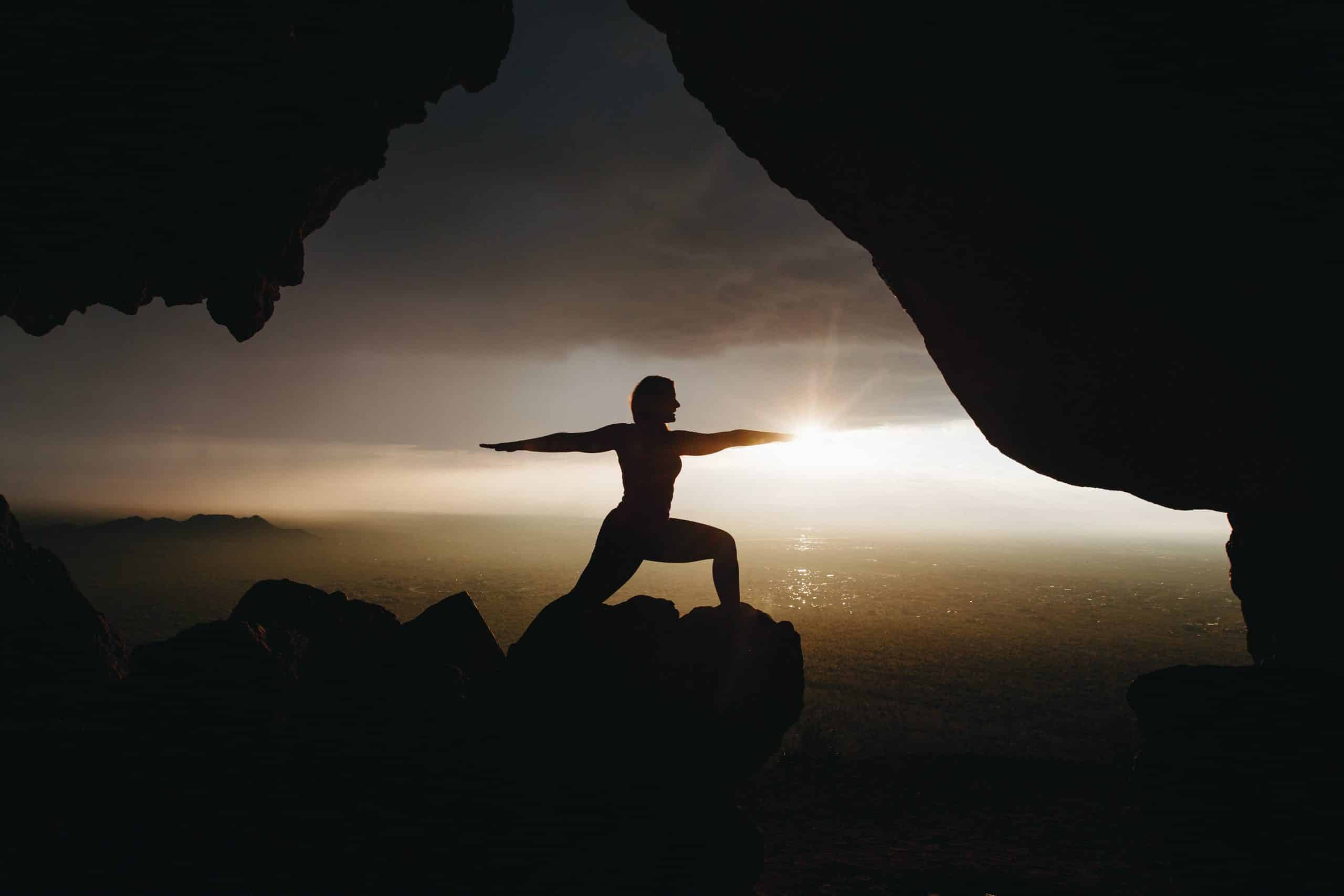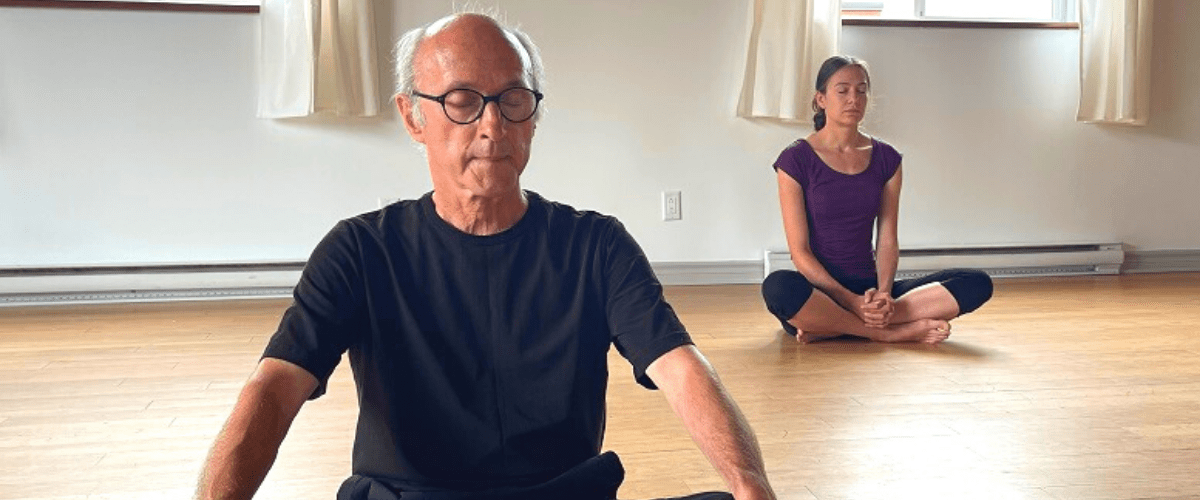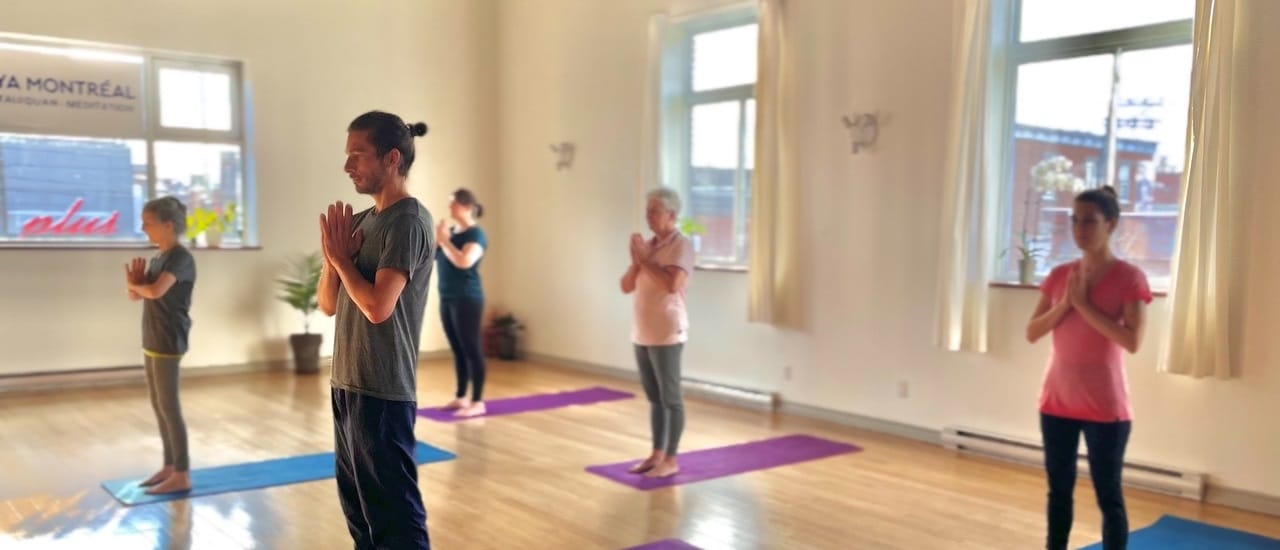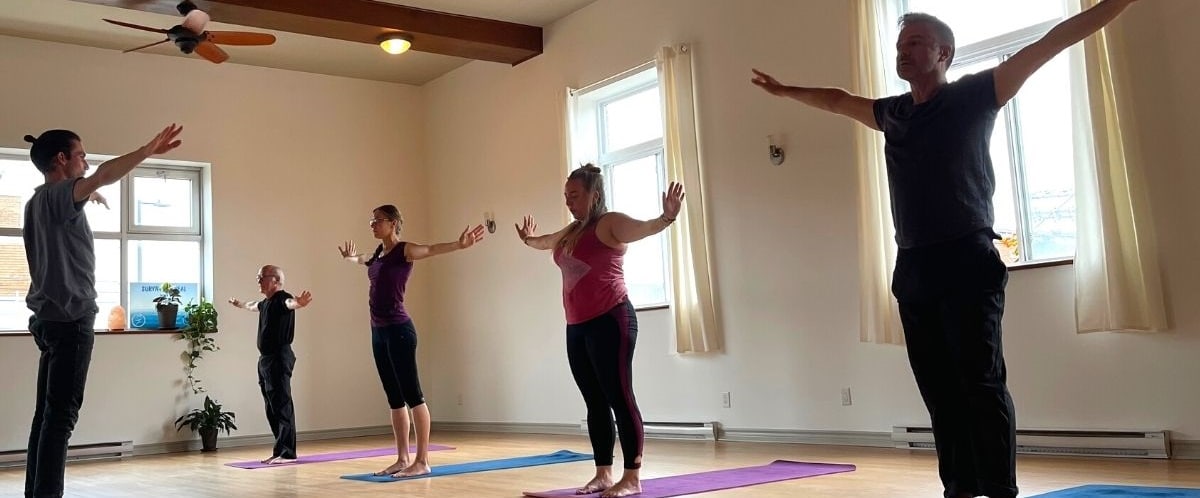Asana is a first step, with a main objective of enabling the body to be more permeable to energy. From the Vedic perspective, all physical disorders come from an imbalanced energy flow in the body. These disorders lead to blockages.
The asana works on two levels:
- Energetic level: it allows energy to flow where there was a block
- Physical level: it works on the spine, keeping it flexible and elastic
Asana as physical practice
Firstly, Hatha yoga fights against rigidity in the spine because the loss of flexibility in the spinal column is a sign of deterioration, since it controls important higher functions. Other parts of the body share the management of its secondary functions. Body rigidity indicates reduced levels of cellular, organic and psychic life.
The asana’s actions impact the whole nervous system because it balances the sympathetic and parasympathetic systems, the endocrine system and internal organs as much as the muscles, the breath and blood circulation. It does this by compression, stretching, stimulation, decongestion and increased irrigation in the brain (the importance of the inverse postures that irrigate the brain).
Asana acting on the mind
There is also an action on the mental and emotional level because every part of the physical body has a psychic counterpart.
Some yogis say that when illness or pain are felt, their physical location relate to psychic resistance. To understand the cause of any ailment, it is therefore enough to know the relationship between physical regions and their psychic counterpart. For example, the chest corresponds to anxiety or self-confidence. When the chest is folded, it is closed to energy and this relates to shyness, internal tension and anxiety. Another example, with the discovery of the new science of psychoanalytic gymnastic (gesthaltherapy or antigymnastic are part of this), is that the pelvis and coxo-femoral articulation relate to sexuality.
Over a period of time, the coordination work between movement and breath, leads to maximal physical relaxation as well as mental and emotional stability.
The optimal posture
When maximal relaxation is reached, the posture can be done easily and shows that the energy is flowing freely (because some may be the source of emotional reactions). Working on the awaking of those ‘’dead zones’’ (blockages), the asana releases unconscious memories and by liberating those emotions, it improves composure and peace of mind.
From a practical perspective, ‘’vinyasa krama’’ is a transition between the various postures of a sequence and their coordination with the breath. The practice of the surya namaskar (sun salutation) sequence is a reflection of this dynamic aspiration.
However, it is important to remember that vinyasa karma is a preliminary step of practice with the objective of preparing the body to hold key postures over a long period of time.
For example, the inverse postures (Sarvangasana et Shirsasana) that can be held for half an hour or more with training. Some schools choose to count the number of breaths as a way of determining the duration. In this way, with a rhythm of one breath per minute (trained students only), in Shirsasana, thirthy respiratory cycles mean thirty minutes holding the posture.
Furthermore, sitting postures like Padmasana (lotus pose) should be able to be held comfortably for a long period of time, in order to allow for practicing the higher steps: Pranayama then Introspection.
This will lead us towards true sitting beyond postures: the one at the heart of the self…




